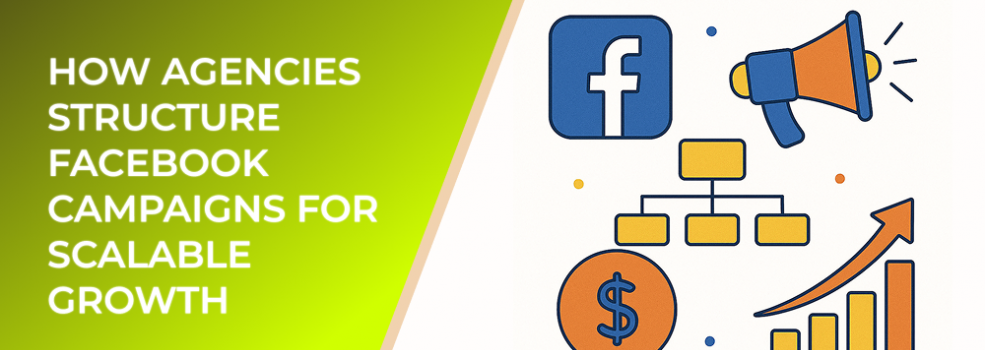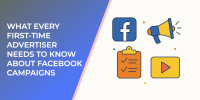When budgets increase, messy setups collapse. Agencies know that poor structure leads to wasted spend, duplicate audiences, and unreliable data. According to Meta’s internal benchmarks, advertisers with simplified campaign structures see 10–20% lower cost per result during the Learning Phase compared to overly complex setups.
Step 1: Start with one clear objective per campaign
Agencies never mix goals. One campaign = one objective. For example:
-
Sales → Purchase event as KPI.
-
Lead gen → Cost per lead (CPL).
-
Awareness → Reach or brand lift.
Stat: Campaigns aligned to a single KPI stabilize faster and typically see 15–25% stronger optimization signals within the first 2 weeks.
Step 2: Use structured ad set segmentation
Most agencies set up 2–4 ad sets per campaign:
-
Cold audience (broad or interest-based).
-
Lookalike audience (from customers or leads).
-
Retargeting audience (site visitors, engagers).
This approach ensures coverage across the funnel while avoiding overlap.
Stat: Retargeting ad sets often achieve CPAs 20–50% lower than cold traffic.
Step 3: Keep creatives diversified but controlled
Agencies know that creative drives performance. A standard setup includes 2–3 ads per ad set, covering:
-
Product demo or explainer.
-
Social proof (reviews, UGC).
-
Offer-driven creative.
Stat: UGC-style creatives frequently reduce CPA by 15–35% compared to polished brand videos.
Step 4: Balance budgets for growth
Professional teams calculate budgets around conversion costs:
-
Prospecting ad sets: 70–80% of total budget.
-
Retargeting ad sets: 20–30% of total budget.
Scaling is done carefully, with 15–20% budget increases every few days on winning ad sets.
Stat: Sudden budget jumps can raise CPAs by 10–40% due to algorithm resets.
Step 5: Use Advantage Campaign Budget (CBO) strategically
Agencies often begin with Ad Set Budgets (ABO) for control, then shift to Campaign Budget Optimization (CBO) once they’ve identified winners. CBO helps scale efficiently by redistributing spend dynamically.
Step 6: Refresh creatives on a schedule
To avoid ad fatigue, agencies rotate new creatives every 2–3 weeks. They introduce one new concept while keeping top performers live, ensuring both stability and testing.
Stat: Regular creative refreshes can sustain CTRs 20–30% higher than stagnant setups.
Step 7: Layer retargeting funnels
High-performing agencies never run cold-only campaigns. They build always-on retargeting with:
-
7-day cart abandoners.
-
14–30 day product viewers.
-
30-day social engagers.
This structure keeps conversion costs low and sales consistent.
Step 8: Track and optimize with meaningful KPIs
Agencies focus on bottom-line metrics:
-
CPA (cost per acquisition).
-
ROAS (return on ad spend).
-
Conversion rate (site or lead form).
Click-through rate and CPM are monitored but never treated as primary success signals.
Useful Statistics Recap
-
Simplified structures lower cost per result by 10–20%.
-
Single-objective campaigns improve optimization by 15–25%.
-
Retargeting delivers CPAs 20–50% cheaper than prospecting.
-
UGC creatives cut CPAs by 15–35%.
-
Sudden budget increases can raise CPAs by 10–40%.
-
Creative refreshes sustain CTRs 20–30% higher.
Where to go next on LeadEnforce
To sharpen your campaign strategy, explore these articles:
-
Meta Ad Campaign Objectives Explained: How to Choose the Right One — avoid mismatched goals.
-
Facebook Ads Not Converting: How To Fix It — troubleshoot underperforming campaigns.
-
Facebook Ad Targeting 101: How to Reach the Right Audience — learn precise targeting methods agencies use.
Final word
Agencies scale Facebook ads by combining disciplined structures, controlled testing, and consistent optimization. Keep campaigns simple, refresh creatives, balance budgets, and always align objectives with KPIs. With this framework, you can grow your campaigns without losing efficiency.

